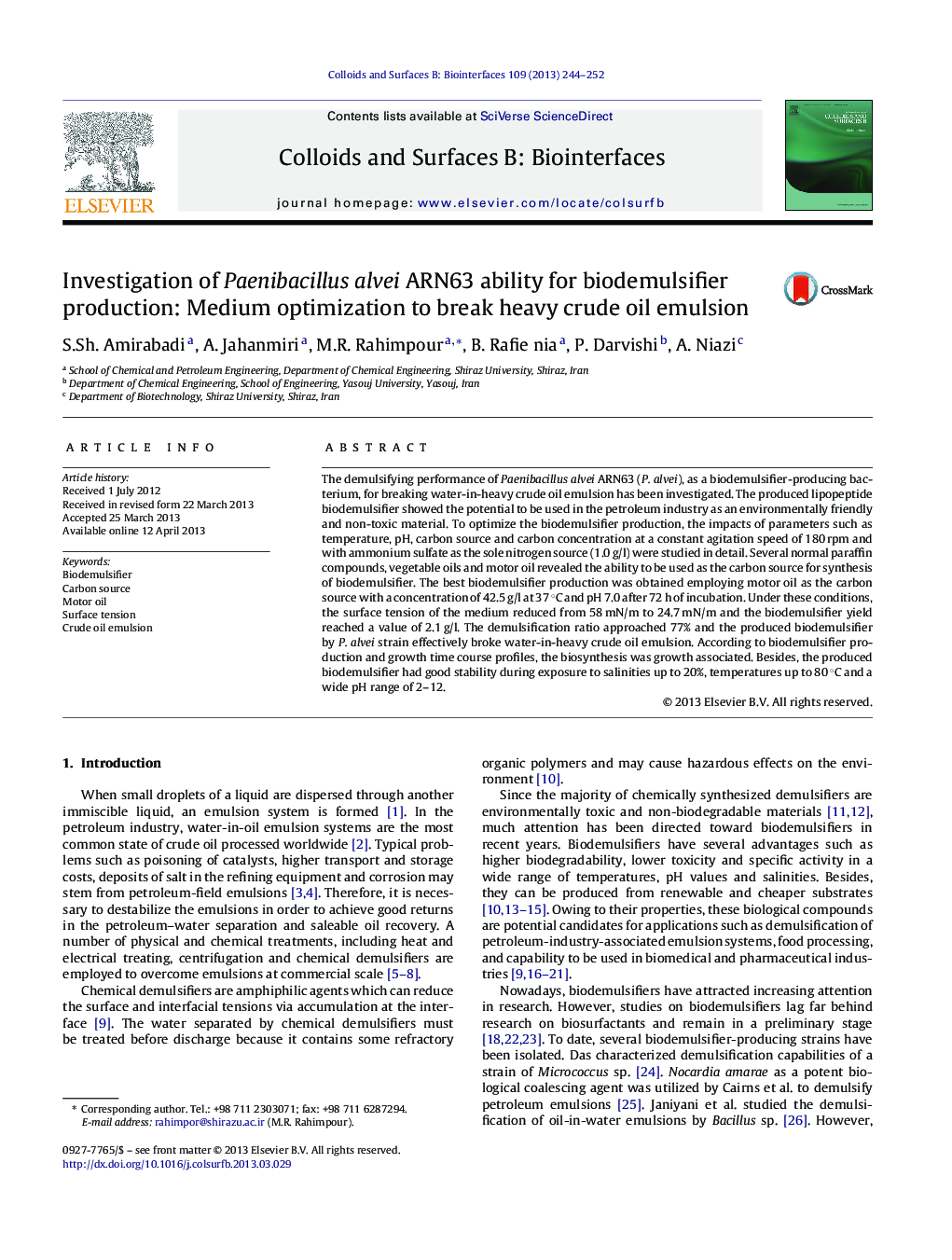| Article ID | Journal | Published Year | Pages | File Type |
|---|---|---|---|---|
| 600103 | Colloids and Surfaces B: Biointerfaces | 2013 | 9 Pages |
•The culture medium for production of biodemulsifier has been optimized.•Motor oil has been determined as the best substrate for biodemulsifier production.•The produced biodemulsifier can be used to break water-in-heavy crude oil emulsion.
The demulsifying performance of Paenibacillus alvei ARN63 (P. alvei), as a biodemulsifier-producing bacterium, for breaking water-in-heavy crude oil emulsion has been investigated. The produced lipopeptide biodemulsifier showed the potential to be used in the petroleum industry as an environmentally friendly and non-toxic material. To optimize the biodemulsifier production, the impacts of parameters such as temperature, pH, carbon source and carbon concentration at a constant agitation speed of 180 rpm and with ammonium sulfate as the sole nitrogen source (1.0 g/l) were studied in detail. Several normal paraffin compounds, vegetable oils and motor oil revealed the ability to be used as the carbon source for synthesis of biodemulsifier. The best biodemulsifier production was obtained employing motor oil as the carbon source with a concentration of 42.5 g/l at 37 °C and pH 7.0 after 72 h of incubation. Under these conditions, the surface tension of the medium reduced from 58 mN/m to 24.7 mN/m and the biodemulsifier yield reached a value of 2.1 g/l. The demulsification ratio approached 77% and the produced biodemulsifier by P. alvei strain effectively broke water-in-heavy crude oil emulsion. According to biodemulsifier production and growth time course profiles, the biosynthesis was growth associated. Besides, the produced biodemulsifier had good stability during exposure to salinities up to 20%, temperatures up to 80 °C and a wide pH range of 2–12.
Graphical abstractFigure optionsDownload full-size imageDownload as PowerPoint slide
